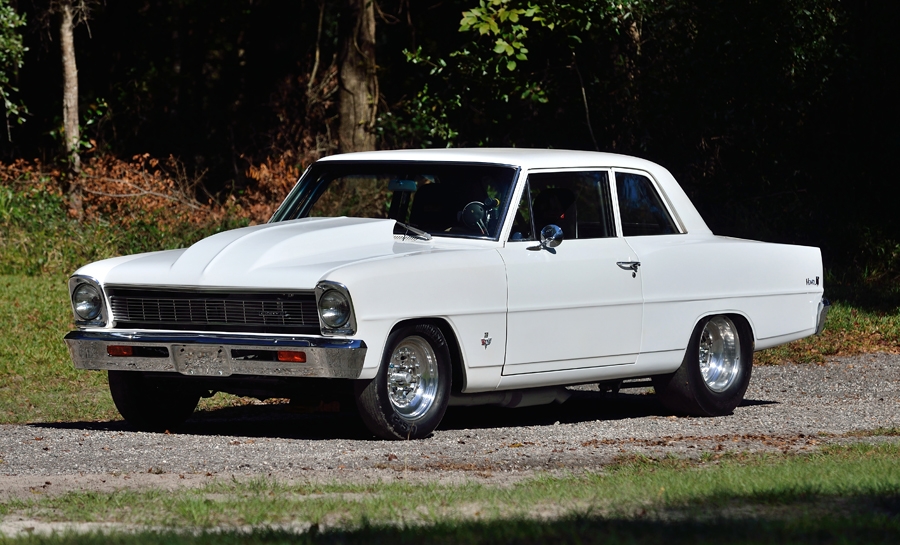- Custom build completed in 2015
- Balanced and blueprinted 355-ci engine with Comp Cam
- Weiand Team G intake manifold, Holley carburetor with Big Shot NOS system
- MSD distributor with Digital-7 programmable ignition
- Doug’s ceramic-coated headers
- 3½-inch exhaust, Flowmaster mufflers
- Aerospace fuel pump and three regulators with 10-gallon aluminum fuel cell
- Turbo Action 350 transmission with transbrake and Cheetah SCR manual shift
- 3,500 stall converter
- Ford nine-inch rear end 4.11 Richmond gears
- Mark Williams axles, spool and driveshaft
- Aerospace four-piston disc brakes
- Wilwood master cylinder, Hurst line lock
- Mono-leaf rear suspension, CalTracs traction bars
- Harwood fiberglass cowl hood
- Eight-point roll cage with swing-outs
- Kirkey seats and Simpson harnesses
- Auto Meter gauges and Pro Comp tachometer
- Cragar 306 Alumastar wheels
- Griffin aluminum radiator
Chassis Number: 113116W130255

